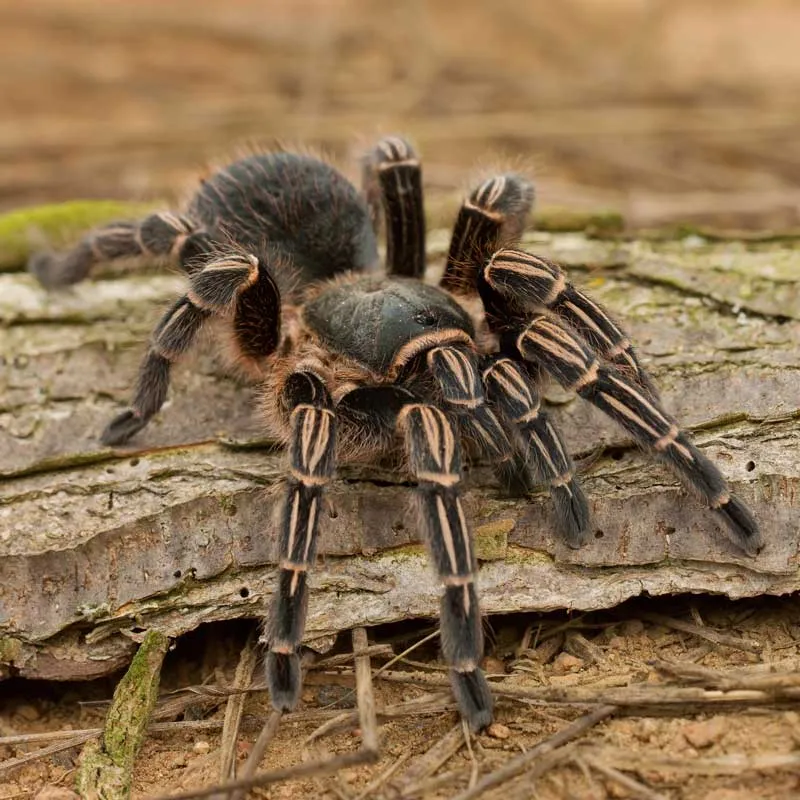Costa Rican Zebra Tarantula Top 5 Care Tips
The Costa Rican Zebra Tarantula, scientifically known as Aphonopelma seemanni, is a popular pet choice for its striking appearance and relatively docile temperament. Native to Central America, these spiders are known for their black and white striped legs, resembling a zebra’s pattern. However, owning a Costa Rican Zebra Tarantula comes with responsibilities. Providing the right care is crucial for their well-being and longevity. This guide offers the top 5 care tips to ensure your tarantula thrives in captivity. Following these guidelines will help you create a comfortable and enriching environment for your eight-legged friend. From habitat setup to handling, this article will cover everything you need to know to care for your Costa Rican Zebra Tarantula and ensure a healthy and happy life.
Habitat Setup
Creating the right habitat is the first and arguably most critical step in caring for your Costa Rican Zebra Tarantula. A well-designed enclosure mimics their natural environment and provides the necessary conditions for them to thrive. Proper setup not only ensures their physical health but also reduces stress, encouraging natural behaviors. Remember that the enclosure should be secure to prevent escapes. Considering the tarantula’s lifespan, which can be quite long, making a thoughtful investment in a suitable habitat is essential for the long-term well-being of your pet. Pay attention to the details, as they significantly impact the tarantula’s overall comfort and health.
Enclosure Size
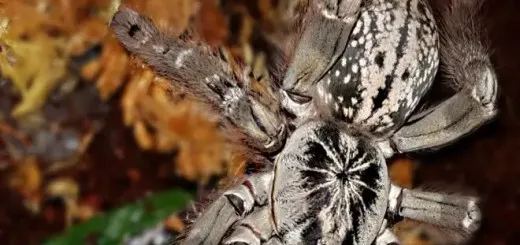
The size of the enclosure is directly proportional to the size of the tarantula. A juvenile Costa Rican Zebra Tarantula can start in a smaller enclosure, such as a 5-gallon tank, but as it grows, it will need more space. For an adult, a 10-gallon tank or larger is recommended. The enclosure should be wider than it is tall, as these tarantulas are terrestrial and primarily live on the ground. Ensure the enclosure has a secure lid to prevent escape. Adequate space allows for natural behaviors, like burrowing and exploring, reducing stress and improving their quality of life. A cramped enclosure can lead to behavioral problems and make it difficult to maintain proper temperature and humidity levels. Always provide more space than you think they need to ensure your tarantula is healthy and happy.
Substrate and Furnishings
The substrate is the material that covers the bottom of the enclosure, and it is crucial for maintaining humidity and providing a natural environment. A good substrate for a Costa Rican Zebra Tarantula is a mix of coco fiber, peat moss, and a small amount of vermiculite. This combination holds moisture well while allowing for burrowing. Provide a depth of at least 4-6 inches. Furnishings add enrichment and provide hiding places. Include a hide, such as a cork bark or a half log, which allows the tarantula to feel secure. A few artificial or live plants can also add visual interest and help maintain humidity. Remember to avoid sharp objects or materials that could injure your tarantula. The right furnishings will also make the enclosure aesthetically pleasing.
Temperature and Humidity
Costa Rican Zebra Tarantulas thrive in a specific range of temperature and humidity. The ideal temperature is between 75°F and 85°F (24°C and 29°C). Use a heat source, such as a low-wattage heat mat, placed on the side of the enclosure, to maintain this temperature. Avoid placing the heat mat directly under the tank, as this can be uncomfortable for the tarantula. The humidity should be between 60% and 70%. You can monitor this using a hygrometer. To maintain humidity, lightly mist the enclosure every few days, being careful not to oversaturate the substrate. Proper temperature and humidity are essential for the tarantula’s health, proper molting, and overall well-being.
Feeding Your Tarantula
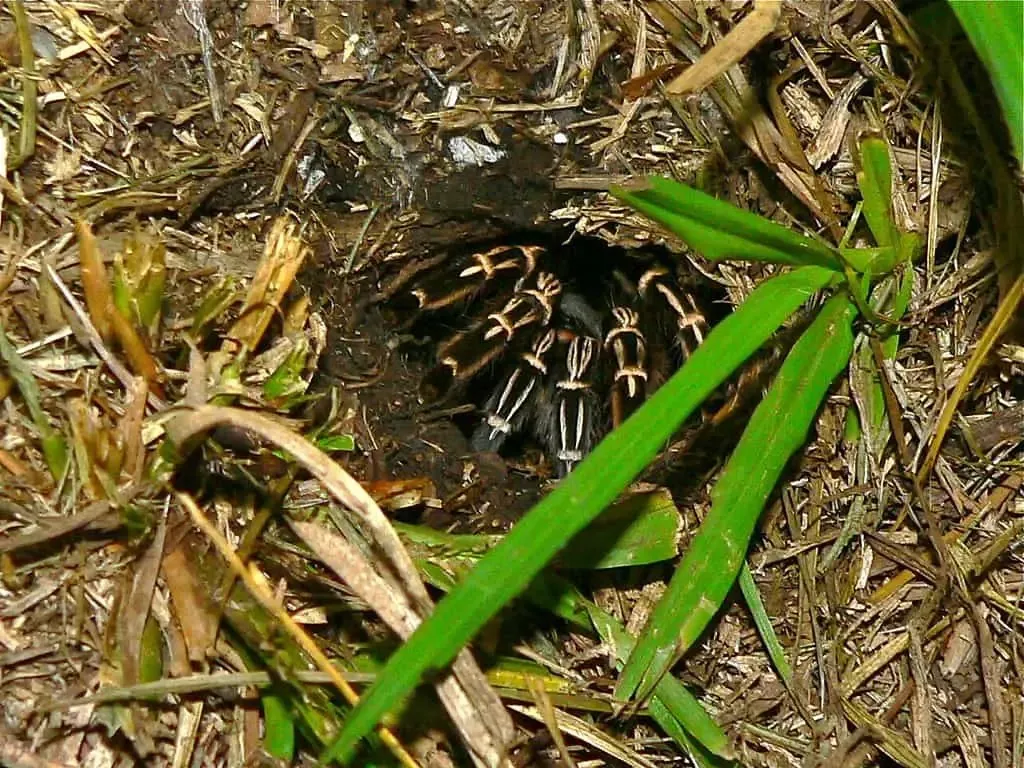
Proper feeding is essential for the health and growth of your Costa Rican Zebra Tarantula. They are voracious eaters, and understanding their dietary needs is crucial. The type of food, the frequency of feeding, and the size of the prey all play a role in their overall well-being. Providing the right nutrition ensures they have the energy they need to thrive and keeps them healthy. Overfeeding can lead to health problems, while underfeeding can stunt their growth. Finding the right balance is key.
Food Types
The primary food source for a Costa Rican Zebra Tarantula should be insects. Crickets and roaches are the most common and readily available options. Mealworms and superworms can also be given, but in moderation, as they have a higher fat content. The prey should be appropriately sized – no larger than the tarantula’s body. Before feeding, gut-load the insects with nutritious food, such as vegetables and commercial cricket food, to enhance their nutritional value. Always remove any uneaten prey within 24 hours to prevent stress to the tarantula and potential mold growth in the enclosure. The quality and variety of the food directly impact the tarantula’s health and vitality.
Feeding Frequency
The feeding frequency depends on the tarantula’s age and size. Spiderlings (young tarantulas) should be fed two to three times a week. As they grow, you can reduce the frequency to once or twice a week for juveniles and once every one to two weeks for adults. Observe your tarantula’s abdomen. If it appears plump, the tarantula is well-fed. If it seems thin, you can increase the feeding frequency. Avoid feeding your tarantula when it is in premolt (about to shed its exoskeleton), as it may not be interested in eating. Always remove uneaten food to keep the enclosure clean and hygienic. Consistency in feeding times can also help your tarantula adapt to a regular routine.
Watering and Hydration
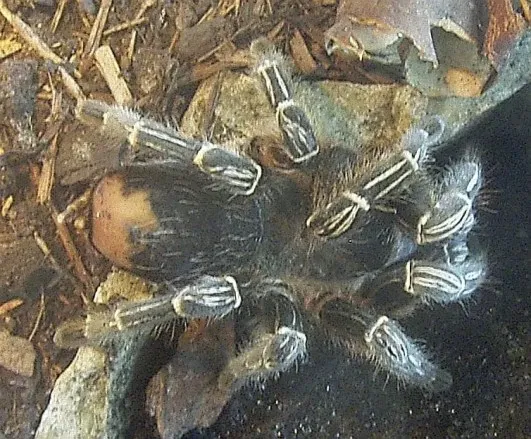
Water is essential for all living creatures, and your Costa Rican Zebra Tarantula is no exception. Proper hydration is crucial for their health and well-being. They get hydration through two primary methods, namely the water bowl and misting. Providing a constant supply of clean water will help them thrive. The importance of clean water and the right humidity levels cannot be overstated for this species.
Water Bowl
A shallow water bowl is essential for providing your Costa Rican Zebra Tarantula with a constant source of fresh water. The bowl should be shallow enough to prevent the tarantula from drowning. A bottle cap or a small, shallow dish works well. Make sure the water bowl is stable and will not tip over. Regularly clean the water bowl to prevent algae growth and keep the water fresh. The size of the water bowl should be appropriate for the size of the tarantula, but always ensure the water is accessible.
Misting
In addition to a water bowl, misting the enclosure can provide additional hydration and help maintain humidity. Lightly mist the enclosure every few days, being careful not to oversaturate the substrate. You can mist the sides of the enclosure and any decorations. Observe your tarantula’s behavior; if it seems dehydrated, you can increase the misting frequency. However, avoid misting directly onto the tarantula, as this can stress them. The combination of a water bowl and regular misting will ensure your tarantula stays well-hydrated.
Handling and Interaction
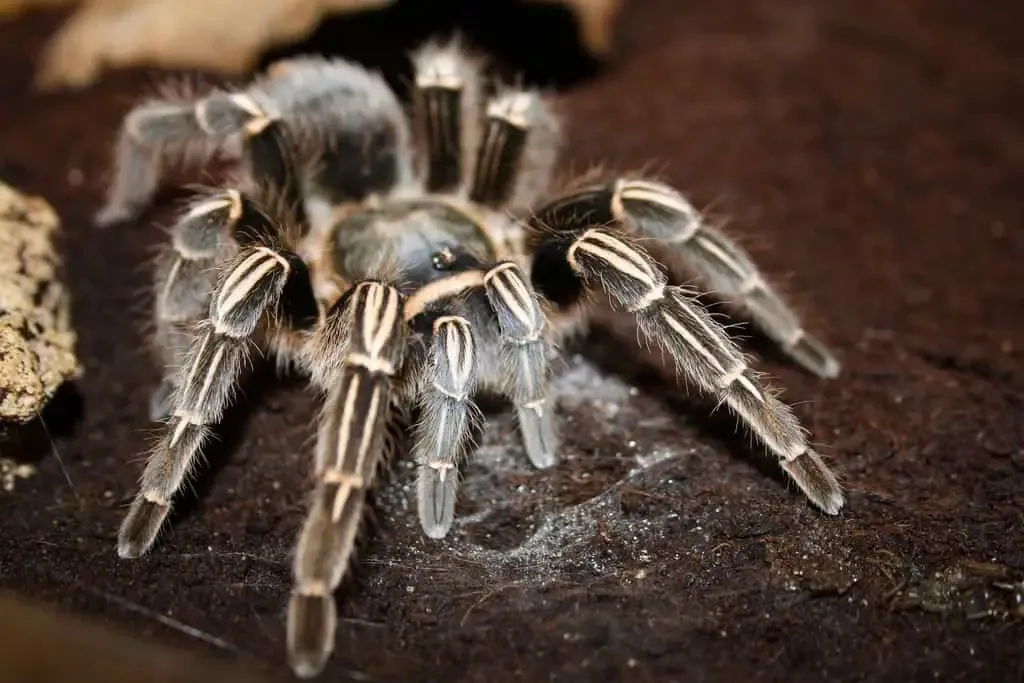
While Costa Rican Zebra Tarantulas are known for their relatively docile temperament, handling them should be done with caution. Tarantulas are fragile creatures, and a fall can be fatal. It’s crucial to understand when and how to handle your tarantula safely to avoid harm to yourself and the spider. Handling is not essential for their well-being, and in most cases, it’s best to admire them from a distance. Consider the risks associated with handling and prioritize the tarantula’s safety and comfort.
When to Avoid Handling
There are several situations where handling should be strictly avoided. Do not handle your tarantula during premolt, as they are more vulnerable and stressed during this time. Avoid handling after feeding, as they may be more defensive. Never handle a tarantula if you are unsure of its mood or behavior. Small children should always be supervised, as they might not be able to handle the situation responsibly. Always respect their space and observe their behavior to gauge their comfort level.
Observing Your Tarantula
The best way to interact with your Costa Rican Zebra Tarantula is through observation. Observe its behavior, feeding habits, and molting process. This will give you a better understanding of its needs and well-being. When observing, avoid sudden movements or loud noises that could startle the tarantula. Enjoy the opportunity to appreciate the unique characteristics and behaviors of this fascinating creature from a safe distance. Providing an enriching environment and observing the tarantula’s natural behaviors can be more rewarding than direct handling.
Health and Hygiene
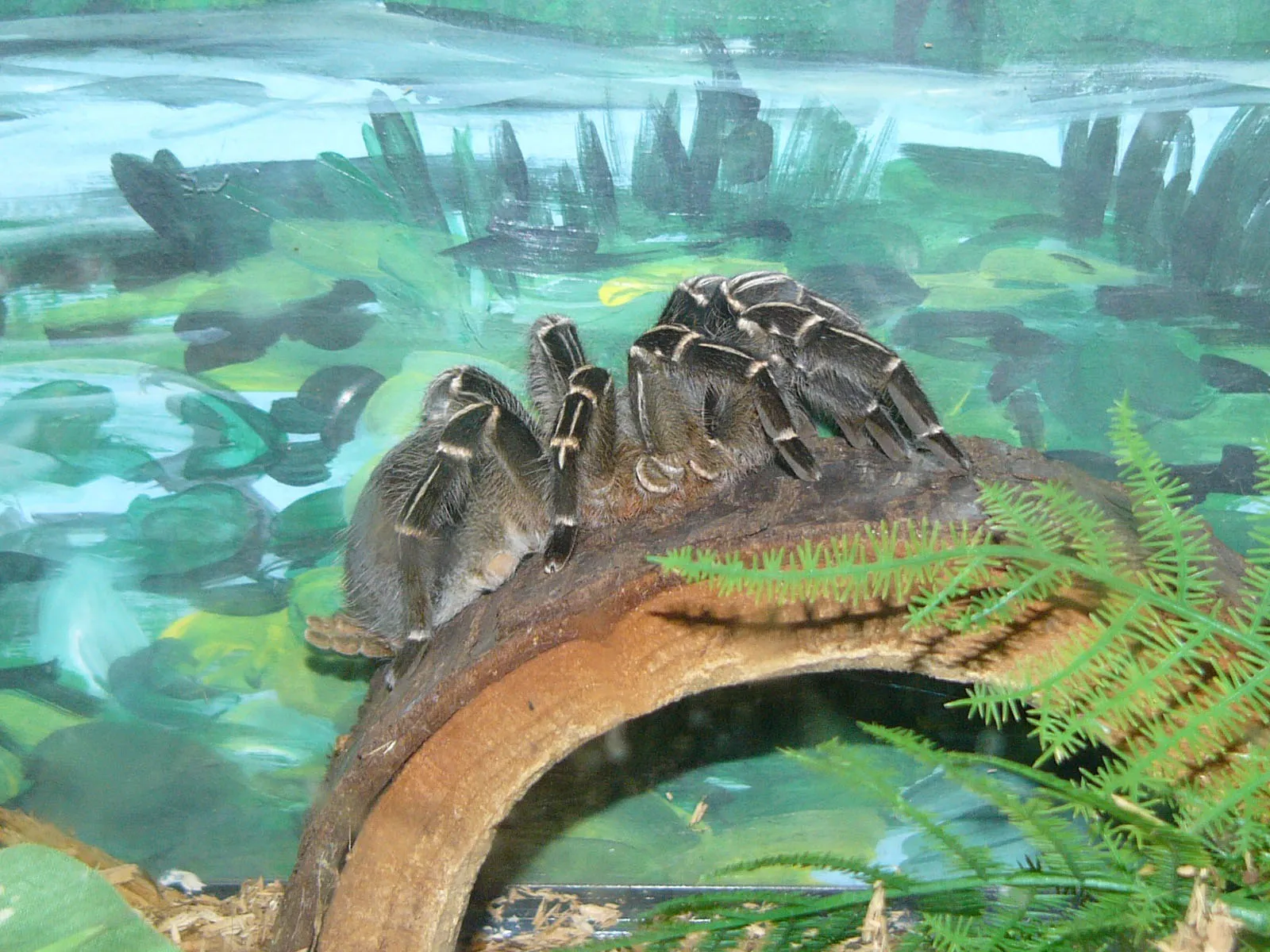
Maintaining a healthy and clean environment is crucial for the well-being of your Costa Rican Zebra Tarantula. Regular hygiene practices, coupled with an understanding of potential health issues, will help you provide the best possible care. Recognizing signs of illness and taking proactive steps will contribute to the long and healthy life of your pet. A clean enclosure promotes the spider’s health and reduces the risk of illness.
Recognizing Signs of Illness
Learn to recognize the signs of illness in your Costa Rican Zebra Tarantula. Some indicators include lethargy, loss of appetite, and unusual postures. If you notice your tarantula is not eating, check for other signs of illness, such as parasites or mites. A tarantula that is walking strangely or having difficulty molting may also have health issues. If you suspect your tarantula is sick, consult with an experienced tarantula keeper or a veterinarian familiar with arachnids. Early detection and treatment are key to successful recovery.
Cleaning the Enclosure
Regular cleaning of the enclosure is essential to maintain a healthy environment. Spot-clean the enclosure weekly by removing any uneaten food, molts, or waste. Complete enclosure cleaning should be done every few months. This involves removing all the substrate, cleaning the enclosure with a mild disinfectant, and replacing the substrate with fresh material. Handle the tarantula with care when moving it during cleaning, and always ensure it is safe. Maintaining a clean environment not only keeps the enclosure hygienic but also contributes to the overall well-being of your tarantula. Proper hygiene prevents diseases and ensures the longevity of your pet.
